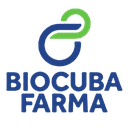Executive Secretary

VIII Simposio Internacional de Química y Ciencias Farmacéuticas
VIII Conferencia "Ciencias Químicas"
Resumen
Los derivados de tiadiazín-2-tiona tienen una amplia actividad biológica. En muchos casos, estos compuestos no tienen una buena relación actividad-citotoxicidad.[1] Para tratar de resolver este problema, se han obtenido nuevas tiadiazinas, con dos heterociclos en su estructura [2] o con algunos fragmentos peptídicos. [3] La reacción de Ugi-4C se ha empleado en la búsueda de nuevas moléculas con una mayor diversidad estructural. El uso de tiadiazinas como el componente de ácidos carboxílicos en esta reacción multicomponente se ha reportado previamente en nuestro grupo. [3] [4] Como resultado, se sintetizaron exitosamente tres familias de derivados de tiadiazinas usando esta metodología. Aquí presentamos un nuevo enfoque donde un aducto Ugi-4C se usa en la síntesis de mono-y bis- tiadiazinas como componente amino. Todos los compuestos han sido caracterizados usando las técnicas RP-HPLC, ESI-MS y RMN.
[1] a) X. Wang, X. Fu, M. Chen, A. Wang, J. Yan, Y. Mei, M. Wang. Chinese Chem Lett, 2019, 30, 1419-1422. b) J. Coro, O. Pérez, L. Monzote, H. Rodríguez, M. Suárez. Open Med. Chem J, 2011, 5, 51-60.
[2] J. Coro, O. Pérez, H. Rodríguez, M. Suárez, C. Vega, M. Rolón, D. Montero, J.J Nogal, A. Gómez-Barrio A. Bioorg Med Chem, 2005, 13, 3413-3421.
[3] R. Echemendía, O Fernández, J. Coro, M. Suárez, D García. Tetrahedron, 2017, 58, 1784-1787.
[4] R. Echemendía, W.F. Rabelo, E. Rodríguez, J. Coro, M. Suárez, M. Weber, D García. Tetrahedron Lett, 2018, 59, 4050-4053.
Abstract
Thiadiazine-2-tione derivatives have a wide variety of biological activity. In many cases, these compounds do not have a good activity-cytotoxicity ratio.[1] To try to solve this problem, new thiadiazines, with two heterocycles in their structure [2] or with some peptide fragments [3], have been obtained. The Ugi-4C reaction has been employed in the search for new molecules with greater structural diversity. The use of thiadiazine as the carboxylic component of this multicomponent reaction has previously been reported in our group. [3] [4] As a result, three families of thiadiazine derivatives were successfully synthesized using this methodology. Here we present a new approach where a Ugi-4C adduct is used in the synthesis of mono- and bis- thiadiazines as amino component. All compounds have been characterized using RP-HPLC, ESI-MS and NMR techniques.
[1] a) X. Wang, X. Fu, M. Chen, A. Wang, J. Yan, Y. Mei, M. Wang. Chinese Chem Lett, 2019, 30, 1419-1422. b) J. Coro, O. Pérez, L. Monzote, H. Rodríguez, M. Suárez. Open Med. Chem J, 2011, 5, 51-60.
[2] J. Coro, O. Pérez, H. Rodríguez, M. Suárez, C. Vega, M. Rolón, D. Montero, J.J Nogal, A. Gómez-Barrio A. Bioorg Med Chem, 2005, 13, 3413-3421.
[3] R. Echemendía, O Fernández, J. Coro, M. Suárez, D García. Tetrahedron, 2017, 58, 1784-1787.
[4] R. Echemendía, W.F. Rabelo, E. Rodríguez, J. Coro, M. Suárez, M. Weber, D García. Tetrahedron Lett, 2018, 59, 4050-4053.
Sobre el ponente

Julieta Coro Bermello

Discussion




